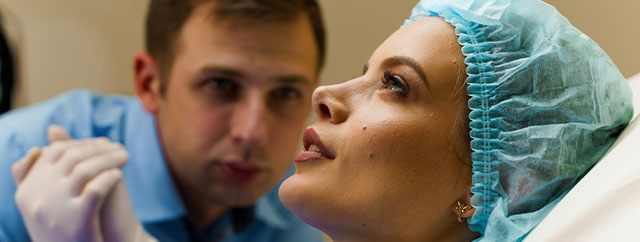Post Date: 4/7/2023

Pre-rhinoplasty analyzes and evaluations provide comprehensive information about the nose job process and outcomes. These are studies that provide information on whether the particular case is suitable for surgery and how complicated it is technically, i.e. to predict the success rate during and after rhinoplasty.
Many experienced surgeons take a very sensitive approach to the preparation period prior to rhinoplasty. Nasal analyzes provide a consistent prediction, which in turn leads to patient satisfaction. Generally, these preoperative evaluations are performed on the skin tissue and bone cartilage tissue ( osteocartilaginous ) of the nose job candidate.
Some cases of rhinoplasty can be considered technically easy for the surgeon, which often means that the results are impressive. However, there are also cases that are considered difficult by both the surgeon and the patient.
The more experience a surgeon gains in the field of rhinoplasty, the easier it is for them to master the technical aspects of the operations. Thus, they are more accurate in pre-operative analysis and evaluation.
Certain systematic approaches are used to address the existing nasal structures of nose job candidates intraoperatively and postoperatively. Since Prof. Dr. Selçuk İnanlı has earned a respectable place in the field of rhinoplasty for years, you can consult him for information about the entire process before and after the treatment.
Nasal analysis before rhinoplasty begins with the surgeon's evaluation of the patient's face and nose ratios. So, there is math involved here as well. One of the first procedures is to determine the place where the nose covers the person's face.
The surgeon divides the patient's face horizontally into 3 equal parts, the first one is from the hairline to the eyebrow. It is also called "Glabella".
The second part, which starts from the glabella and ends just below the nostrils, is called the "Subnasal". The last section between the nose and the chin protrusion is the "Menton". An ideal nose should be in the middle of these 3 parts.
The surgeon then divides the person's face vertically into 5 equal parts. Each part should be equal to the other. Here, the ideal result expected in the pre-rhinoplasty analysis is that the outer edges of the nostrils remain within the 1/5 part in the middle.
After the mentioned stages are passed in the nose analysis above, the relationship between the nose and face of the candidate becomes somewhat clear. It can be understood from here how sensitive a rhinoplasty procedure is.
In addition, some terms defined on the nose also play a role in the analysis and evaluation process. The most important of these are listed below.
All of these are expressions and terms that the surgeon uses when examining the case and explaining to the patient in line with their expectations and needs, and that helps the person visualize the possible outcomes.
Another topic examined before rhinoplasty surgery includes the special situations between the nose and the face. The brow-tip aesthetic line is one of them. It starts in the inner part of the eyebrow and extends along the bridge of the nose. This line is evaluated from the opposite side of the patient and should be equal on the right and left sides, without any asymmetrical deviations.
Another is the nasofrontal angle. This measurement, viewed from the profile, shows the value between the ridge of the nose and the glabella. Ideally, it should be 120-130 degrees for men and 115-125 degrees for women.
The nasolabial angle is also evaluated from the patient's profile. It gives the degree of angle between the upper lip and the columella. While the ideal is 90-95 degrees for men, it is 100-105 degrees for women. It is sharper in people with hooked noses.
The "Frankfurt horizontal plane" is also used to assess the rotation of the tip of the nose. A line is drawn just below the candidate's eye socket towards the ear canal and a second line is parallel to the columella then. The angle between these two gives this value and should ideally be between 0-15° for men and between 15-30° for women.
The more experienced the surgeon is, the more likely he / she is to be able to explain these parameters to the patient before rhinoplasty and successfully predict possible outcomes.
Prof. Dr. Selçuk İnanlı, who has performed numerous successful surgeries in the field of rhinoplasty, will provide you with your treatment plan with all the details so that you can get your new nose without any question marks in your mind. For more detailed information about the procedure and to make an appointment, please contact us.